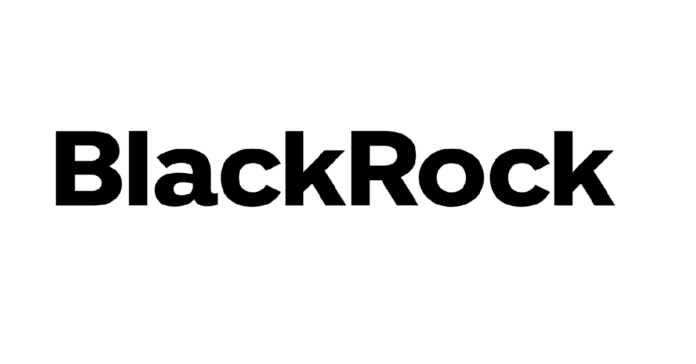NEW YORK – July 25, 2025 – BlackRock Inc. (BLK), the world’s largest asset manager with $12.5 trillion in assets under management as of June 30, 2025, continues to demonstrate resilience in a dynamic financial landscape.
The company’s second quarter 2025 results, released on July 15, 2025, showcased robust performance with adjusted earnings per share of $12.05, surpassing expectations and marking a 16% increase year-over-year. Revenue reached $5,423 million, reflecting 13% growth from Q2 2024, driven by higher investment advisory fees and technology services. This brings trailing twelve-month (TTM) revenue to approximately $21,573 million, underscoring BlackRock’s ability to capitalize on market recoveries and organic growth. Net income attributable to BlackRock for Q2 2025 stood at $1,593 million, contributing to a TTM net income of $6,460 million. These figures highlight the firm’s operational efficiency, with an operating margin of 35.06% on a TTM basis.
To assess BlackRock’s investment potential, we employed two valuation methods: the Buffett-Inspired Valuation Method and the McGrew Growth Valuation Method. Both approaches utilize Distributable Earnings as a proxy for cash flows available to shareholders, given BlackRock’s classification as a financial services firm. Distributable Earnings are approximated using net income attributable to BlackRock, projected over 10 years with specified growth rates, and discounted at 8%. A terminal value is calculated assuming a 2.5% perpetual growth rate. The resulting equity value is divided by the latest shares outstanding (154.8 million) to derive intrinsic value per share, followed by a 40% margin of safety application.
The Buffett-Inspired method applies a conservative 3% constant growth rate for projections, yielding an intrinsic value of $808.65 per share. With a 40% margin of safety, this suggests a target price of $485.19. Compared to the last closing price of $1,118.37, this indicates the stock is overvalued, falling into the “Consider Selling” category as the intrinsic value is less than 80% of the current price.
In contrast, the McGrew Growth method recognizes BlackRock’s growth profile, starting with a 14.19% growth rate (based on 3-year CAGR of earnings) and linearly declining to 6% by year 10. This approach produces an intrinsic value of $1,436.27 per share, with a margin of safety price of $861.76. Relative to $1,118.37, this positions the stock as a “Buy,” as the intrinsic value exceeds the closing price by more than 25% but less than 50%.
These valuations were calculated using a TTM Distributable Earnings base of $6,460 million, an 8% discount rate, and a 2.5% perpetual growth rate beyond year 10. For the McGrew method, the dynamic growth reflects recent earnings trends, while Buffett’s approach prioritizes conservatism. Note that missing data for certain adjustments (e.g., derivative gains/losses) was not factored in, potentially affecting precision.
Delving deeper into quantitative metrics, BlackRock exhibits solid fundamentals. The trailing 12-month return on equity (ROE) stands at 13.45%, indicating efficient use of shareholder capital. Equally noteworthy is the trailing 12-month return on tangible assets (ROTA) of 7.04%, which measures profitability excluding intangibles like goodwill ($28,298 million as of Q1 2025) and other intangible assets ($21,850 million). This metric underscores the firm’s ability to generate earnings from its core operational assets.
BlackRock’s financial health is further evidenced by its low debt-to-equity ratio of 0.30 and strong interest coverage of 14.31 times, providing ample buffer against economic downturns. Free cash flow yield at 2.29% suggests steady cash generation, though revenue growth has been mixed, with a negative 3-year CAGR amid market volatility. Dividend payout remains sustainable at 48.7%, appealing to income-focused investors.
Qualitatively, BlackRock boasts a durable competitive advantage through a combination of brand loyalty, network effects, and cost advantages. Its iShares ETF brand commands strong loyalty among investors, bolstered by network effects from high liquidity and broad market adoption. The Aladdin platform, a proprietary risk management and portfolio construction tool, provides intangible assets that lock in clients via switching costs and operational efficiencies. Evidence of this moat includes BlackRock’s dominant 40%+ share in the U.S. ETF market and consistent inflows, even in turbulent periods, as seen with $67.7 billion in Q2 2025 net flows.
The business model requires low capital for growth, with capital expenditures consuming just 6.78% of free cash flow. This asset-light structure allows significant free cash flow to be directed toward shareholder returns and strategic acquisitions, such as the recent HPS Investment Partners deal, which added $165 billion in AUM. BlackRock’s ability to scale without heavy reinvestment in physical assets is exemplified by its high return on tangible assets and consistent technology-driven revenue from Aladdin subscriptions, which grew 26% year-over-year in Q2 2025.
The asset management industry demonstrates resilience, fueled by long-term trends like retirement savings growth and passive investing shifts. BlackRock is resistant to technological disruption, as it leads in fintech innovations via Aladdin and digital wealth tools. While cyclical with market fluctuations, the industry’s stability is evident in BlackRock’s 6% organic base fee growth in H1 2025, despite global economic uncertainties.
Competitively, BlackRock operates in a concentrated industry dominated by a few giants. Key rivals include Vanguard, known for ultra-low-cost indexing; State Street, strong in custody and ETFs; and Fidelity, with robust active management and retail focus. BlackRock differentiates through its scale in alternatives and private markets, where AUM grew 12% year-over-year to $1,048 billion, outpacing competitors. Vanguard’s cost edge poses a threat in passive funds, but BlackRock counters with innovation and global reach. State Street lags in technology platforms, while Fidelity’s retail focus limits institutional depth compared to BlackRock’s balanced portfolio.
Management’s outlook remains optimistic, emphasizing diversification into private markets and technology. In the Q2 2025 earnings call, CEO Larry Fink highlighted “record inflows” and the HPS acquisition as catalysts for sustained growth, projecting continued momentum in alternatives amid client demand for illiquid assets. This aligns with BlackRock’s strategy to blend public and private investments, positioning it for higher-fee revenue streams.
Limitations in the analysis include reliance on estimated TTM figures post-Q2 2025, potential OCR inaccuracies in provided documents, and the use of 3-year CAGR for growth projections due to the 5-year rate being below 10%. Assumptions such as an 8% discount rate and 2.5% perpetual growth reflect conservative estimates, while net debt was not adjusted in equity value for financial services as per the model.
Overall, BlackRock presents a compelling case for long-term investors, balancing valuation signals with strong fundamentals. The mixed valuation outcomes—overvalued under Buffett but attractive via McGrew—suggest caution, yet the firm’s moat and growth in high-margin areas like alternatives support a positive trajectory. With AUM hitting new highs and strategic expansions, BlackRock is well-equipped to navigate evolving markets.
Valuation Metrics
| Stock Ticker | Valuation Method | Intrinsic Value per Share | Price with 40% Margin of Safety | Last Closing Price | Action |
| BLK | Buffett-Inspired | $808.65 | $485.19 | $1,118.37 | Consider Selling |
| BLK | McGrew Growth | $1,436.27 | $861.76 | $1,118.37 | Buy |
Export to Sheets
Additional Metrics
| Metric Name | Value | Timeframe |
| ROE | 13.45% | TTM |
| ROIC | 9.48% | TTM |
| Gross Profit Margin | 49.4% | TTM |
| Net Profit Margin | 29.94% | TTM |
| Return on Tangible Assets | 7.04% | TTM |
| Debt-to-Equity Ratio | 0.30 | Latest |
| Debt-to-Cash and Equivalents | 1.84 | Latest |
| Earnings Growth Rate | 14.19% | 3-Year CAGR |
| Earnings Growth Rate | 5.35% | 5-Year CAGR |
| Revenue Growth Rate | -3.44% | 3-Year CAGR |
| Revenue Growth Rate | 5.33% | 5-Year CAGR |
| Free Cash Flow Yield | 2.29% | TTM |
| Operating Margin | 35.06% | TTM |
| Interest Coverage Ratio | 14.31 | TTM |
| Capital Expenditures as % of FCF | 6.78% | TTM |
| Dividend Payout Ratio | 48.7% | TTM |
| Per Share Book Value Growth | 16% | YoY |
| Share Buyback/Dilution Trends | Slight dilution | 5-Year |
| Capital Structure | Mostly long-term debt | Latest |

